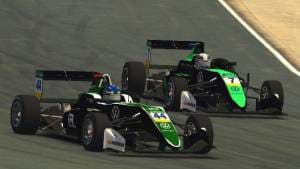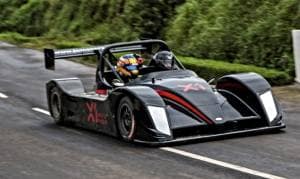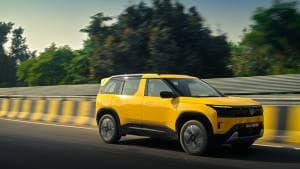i-Rush: A guide to building a sim-racing setup on any budget
There's a bead of sweat that's worked its way down my forehead, quivering dangerously, on the verge of falling into my eye. But I don't dare take a hand off the steering wheel that's alive in my hands to brush it away. This Porsche I'm piloting around Spa is a real handful, squirming and wriggling just looking for an excuse to break free, and my rear view mirrors are filled with the great big grille of the AMG I've just passed, darting this way and that, just waiting for a gap. I've managed to work my way up the field, starting from the rear of a 14-car strong grid, to finally get the lead after an agonising nine laps. And I'm damned if I'm gonna let a little sweat take that away from me.
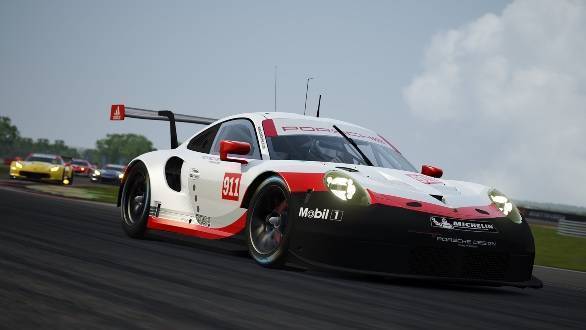 Titles like Assetto Corsa can provide exceedingly realistic visuals when pumped all the way up
Titles like Assetto Corsa can provide exceedingly realistic visuals when pumped all the way up
There's just a lap to go, and if I can hold off till after the tricky uphill Eau Rouge, the long Kemmel straight should give me a second or two to wipe my brow. I'm lucky that my mind is preoccupied with the logistics of getting to that pesky droplet, rather than the supremely annoying prickling sensation its invited. It's given me just enough of a window to concentrate on staying ahead, raising an elbow to my forehead, and crossing the finish line for my first race victory since the lockdown began and since I've fired up Assetto Corsa after a long, long break.

I'd forgotten just how rewarding simulator racing can be once you get into the flow of things, and if you've watched any of the recent simulation races staged in lieu of cancelled motorsport events, you'll know that the action can be pretty intense. If you still think that racing simulators are mere games, you probably haven't spent at least 30 minutes on one trying to cut a few seconds off your lap time. Because while we've all probably spent days hammering away on a keyboard and a Need For Speed title at some point in our lives, there's a very clear distinction between NFS and a racing simulation title, like iRacing, rFactor 2 or Assetto Corsa. Especially when you factor in a half-decent steering wheel-pedal setup. Though, it's not uncommon to occasionally see sim race competitions won by an exceptionally talented person using a game controller, or even a keyboard!
But with the right gear, any of the sim racing titles for road racing or rallying, can teach you a valuable lesson (or ten) about everything from weight balance to setting up a car, and help build your patience and concentration. Even if you're not going racing, it could prepare you for a sticky situation in the real world, say a slide, where muscle memory takes over. Trust us, you're going to be well versed with catching slides if you sim race long enough.
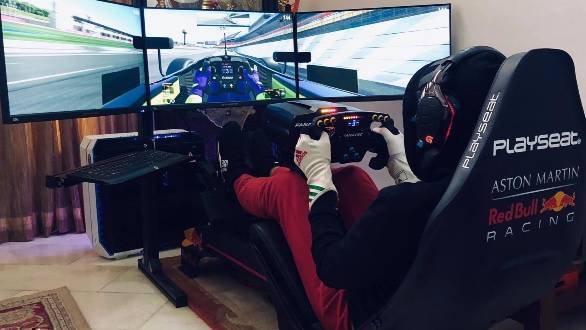 National karting champion, Shahan Ali Mohsin, uses his simulator to learn tracks and get a feel for single-seaters, mostly within iRacing. His setup consists of the Fanatec F1 eSports package and a Playseat F1.
National karting champion, Shahan Ali Mohsin, uses his simulator to learn tracks and get a feel for single-seaters, mostly within iRacing. His setup consists of the Fanatec F1 eSports package and a Playseat F1.
Most titles are realistic enough now that most professional race drivers use them as training tools, that is when they're not training on the multi-million dollar motion simulators at their team headquarters, which use proprietary software that's kept secret. But just to give you an idea of how close some of the commercially available titles get, nearly half the F1 teams use rFactor Pro on their intermediate training setups. Because whether you're a regular person, or a racecar driver, pushing the limits at an actual racetrack, even a kart track, is expensive and not always practical. And given that we're all likely to be spending more time at home for the foreseeable future, a simulation racing hobby isn't a bad way to kill some time. Contrary to popular belief, it isn't that expensive to get started either, though the more invested you become in sim racing, the more you're likely to want to invest in it.
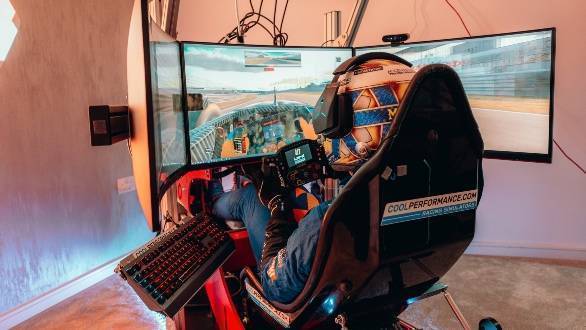 F1 driver Lando Norris' setup goes further with a motion platform, from Cool Performance, and costs nearly Rs 30 lakh! India's very own F1-hopeful, Jehaan Daruvala, uses a similar setup to train
F1 driver Lando Norris' setup goes further with a motion platform, from Cool Performance, and costs nearly Rs 30 lakh! India's very own F1-hopeful, Jehaan Daruvala, uses a similar setup to train
Press 'Start' to race
Deciding which platform to pursue, PC, Xbox or PS4, can be as simple as what you already have. It used to be that certain titles, like Forza, were available only on Xbox, but with Forza Motorsport 7 now on PC as well, that advantage has been wiped out. If you're a Gran Turismo fan, which is PS4-only, you do get a bunch of exclusive content, such as the Vision GT concepts which often foreshadow production cars. And though the racing is pretty realistic, even producing Le Mans racers from gamers through the GT Academy, it's still considered a more casual pick-up thanks to its simplified physics model.
Generally speaking, you'll get the most realistic experience from the titles that are available on PC only, along with better support for peripherals should you choose to upgrade to Virtual Reality goggles and motion platforms. Not to mention there being a wider choice of titles for all disciplines of motorsport, going from road racing, to rallying, drifting and rallycross.
Titles like Assetto Corsa (available on Steam, often on sale) are a good starting point, balancing realism, good car selection, support for car/track mods with decent online multiplayer support when you're ready to go down that route. If you think you're going to be able to dedicate more than a few hours every week to it, it may be a good idea to choose a title like rFactor 2 or Dirt Rally, which has a more active online multiplayer community. iRacing is considered the ultimate when it comes to matching in-game physics to the real thing as well as regularly hosting big name eSport events, but it's subscription based. You also have to pay for additional cars and tracks, so it can get a bit more expensive in the long run.
What's quite surprising is that most titles, especially the older ones for obvious reasons, don't need a vastly powerful PC to be played at low-medium settings, often with minimum system requirements extending to basic CPUs, 4GB of RAM, and a half-decent graphics card from the last decade. Heck, I've found Assetto Corsa is playable (via Boot Camp) on an older MacBook even without a dedicated graphics card! What you'll likely find is that having amazingly detailed visuals don't necessarily make for a more immersive experience, and that a simulator's physics model plays a far bigger role in putting you in the thick of the action.
Pedal to the metal
If you're really determined (and on a really tight budget), you could build your racing skills with just a keyboard but you'll likely be several seconds off a competitive pace online, and won't learn half as much. To get the most out of a sim, you'll need a steering wheel with force feedback and 900 degrees of motion. The first replicates, via a motor, some of the forces you'll feel through the wheel in a real car, while the second matches steering inputs that you would make in a real car, often mapped to each individual car in the better sims.
Now, not all force feedback is created equal, with basic wheels being gear driven, which tend to be noisy and give feedback that's rough around the edges, making it harder to sense the steering loading up, or going light, as you accelerate, brake or corner. Belt-driven wheels generally give smoother, stronger feedback, and often give you an edge for sensing when the car's at the limit, allowing you to gain a few vital tenths of a second. Right at the top of the pyramid sit the direct drive wheels which come as close as you can get to the real thing in fidelity and accuracy, and are what's used in those multi-million dollar simulators.
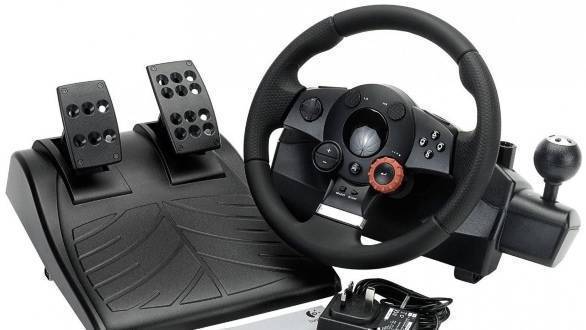 Budget: Under Rs 5,000. Wheel: Plenty of used Logitech Driving Force GT, or Logitech Momo wheels to be found. Avoid everything else. Pedals: Both come with a 2-pedal base Rig: A desk and a chair, what do you expect on a tight budget?
Budget: Under Rs 5,000. Wheel: Plenty of used Logitech Driving Force GT, or Logitech Momo wheels to be found. Avoid everything else. Pedals: Both come with a 2-pedal base Rig: A desk and a chair, what do you expect on a tight budget?
Most consumer wheels come with paddle-shifters attached behind the wheel, with sequential shifters or H-pattern shifters available as separate accessories to help bring you a little closer to the driving experience, in exactly the same way a manual gearbox is more of a joy to operate than an automatic, but not necessarily the quickest way around a track or rally stage. Which brings us to an area of sim racing that's often overlooked when you're starting out the pedals.
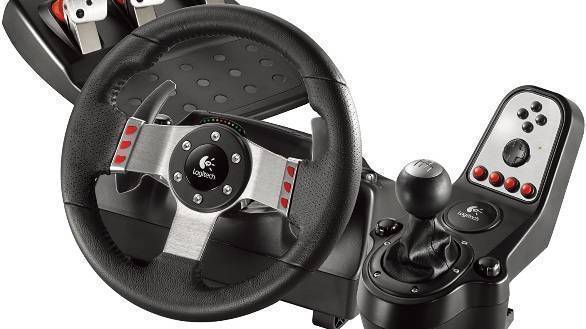 Budget: Under Rs 20,000. Wheel: Again, used Logitech G25/G27. These gear-driven wheels are hard-wearing and very reliable. Pedals: Comes with a 3-pedal base. Rig: Get handy, you could fabricate a basic setup with an old car seat for as little as Rs 5,000
Budget: Under Rs 20,000. Wheel: Again, used Logitech G25/G27. These gear-driven wheels are hard-wearing and very reliable. Pedals: Comes with a 3-pedal base. Rig: Get handy, you could fabricate a basic setup with an old car seat for as little as Rs 5,000
Going by personal experience, the pedals can be the weakest link in your setup. Most wheels come as a kit, with either two pedals or three. But the number of pedals isn't as important as what's behind them, especially when it comes to the brake pedal. The basic pedals, with potentiometers, work by how far you press the pedals. Simple in theory and in practice, since they often feel like switches, making mastering essential driving techniques like trail braking really hard to grasp for a beginner. The more advanced load cell-based pedals work by how hard you press down on them, and allow a much finer degree of modulation. Hydraulic pedals come the closest to a real car's controls, but are expensive and take some knowledge to dial in to perfection. Fortunately, most pedal sets can be plugged directly into your PC, and irrespective of what brand of steering wheel you own. For someone looking to upgrade their basic setup, if you have to spend good money on either a fancy wheel or load cell pedals, choose the pedals first.
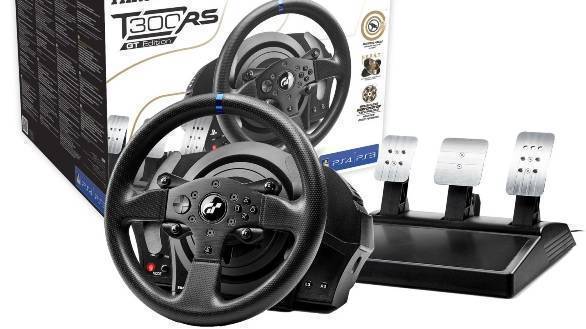 Budget: Rs 30,000-50,000. Wheel: Logitech's G29 is your best bet, and can be had for about Rs 20,000, but goes on sale for less often. The Thrustmaster T300RS GT is nearly double the price but is a belt-driven wheel, and has smoother feedback. Pedals: The G29 comes with a 3-pedal base, while only Thrustmaster 'GT' editions pack the superior T3PA 3-pedal base. Rig: Foldable Playseat Challenge (Rs 22,000 before shipping, duties)
Budget: Rs 30,000-50,000. Wheel: Logitech's G29 is your best bet, and can be had for about Rs 20,000, but goes on sale for less often. The Thrustmaster T300RS GT is nearly double the price but is a belt-driven wheel, and has smoother feedback. Pedals: The G29 comes with a 3-pedal base, while only Thrustmaster 'GT' editions pack the superior T3PA 3-pedal base. Rig: Foldable Playseat Challenge (Rs 22,000 before shipping, duties)
To rig or not to rig
Now that you're on your way to being a better driver on the street, and on the track just by sitting at your desk, you'll probably find yourself looking up more/better gear. And as enticing as a sim racing rig is, with a racing seat, hard mounts for your wheel and pedals, and multiple monitors, it's not likely to make you faster. But it will help you feel like you're racing, making each time you fire up the sim special.
 Budget: Rs 1 lakh. Wheel: Fanatec CSL Elite (Rs 38,000 before shipping, duties). Pedals: Fanatec CSL Elite LC (Rs 15,000 before shipping, duties). Rig: INRacing eSport Magic Racing frame (pictured, costs Rs 39,000).
Budget: Rs 1 lakh. Wheel: Fanatec CSL Elite (Rs 38,000 before shipping, duties). Pedals: Fanatec CSL Elite LC (Rs 15,000 before shipping, duties). Rig: INRacing eSport Magic Racing frame (pictured, costs Rs 39,000).
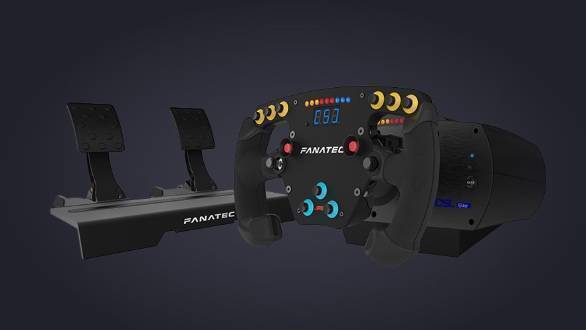 Fanatec's CSL Elite PS4 Starter combo kit at Rs 44,000 (before shipping and duties) may be all the gear you'll need for a while. A worthy addition is the load cell mod for the pedals which takes the price to Rs 55,000.
Fanatec's CSL Elite PS4 Starter combo kit at Rs 44,000 (before shipping and duties) may be all the gear you'll need for a while. A worthy addition is the load cell mod for the pedals which takes the price to Rs 55,000.
This is an especially slippery slope, because from here upping the immersion does mean upping your investment considerably. While VR goggles like the Oculus mean you can ditch the multiple screens and save space, they require more computing power and a steep acclimatisation curve. Motion platforms can be the most expensive upgrade but mimic the motion of the car's suspension and introduce new dimensions of pitch, roll and yaw to the feedback you receive.
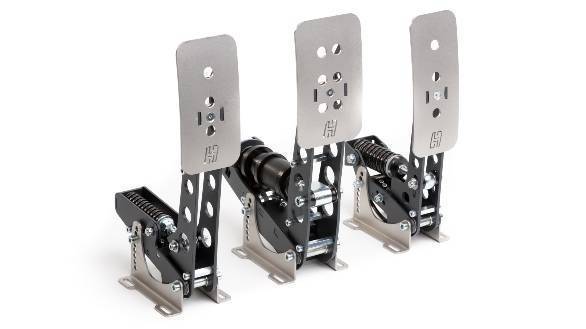 Budget: Rs 2 lakh. Wheel: SimXperience AccuForce Pro V2 (direct drive, Rs 77,000 before shipping, duties), or if you want to stay within the Fanatec eco-system, their Podium Wheel F1 is recommended (direct drive, Rs 1.37 lakh before shipping, duties) Pedals: Fanatec ClubSport Pedals V3 Inverted are the most advanced, with force feedback for brake and throttle (Rs 46,000 before shipping, duties), but Heusinkveld's hydraulic Sim Pedals Sprint (pictured) are more realistic (Rs 55,000 before shipping, duties). Rig: Playseat Evolution (Rs 31,000 before shipping, duties), or the more solid and stable RSeat RS1 (Rs 70,000 before shipping, duties)
Budget: Rs 2 lakh. Wheel: SimXperience AccuForce Pro V2 (direct drive, Rs 77,000 before shipping, duties), or if you want to stay within the Fanatec eco-system, their Podium Wheel F1 is recommended (direct drive, Rs 1.37 lakh before shipping, duties) Pedals: Fanatec ClubSport Pedals V3 Inverted are the most advanced, with force feedback for brake and throttle (Rs 46,000 before shipping, duties), but Heusinkveld's hydraulic Sim Pedals Sprint (pictured) are more realistic (Rs 55,000 before shipping, duties). Rig: Playseat Evolution (Rs 31,000 before shipping, duties), or the more solid and stable RSeat RS1 (Rs 70,000 before shipping, duties)
Since driving, especially racing, is highly dependent on feedback, the more feedback you get, the easier it becomes to balance a car right on the limit. But that's not to say that there aren't other ways to get quicker. The chief being improving your knowledge of the basics of driving quickly. A book like Ultimate Speed Secrets by Ross Bentley is a good start, or you could use Driver61's excellent YouTube channel to gain a better understanding of what it takes to set a fast lap time. Of course, at the end of the day it isn't about the gear, or how much you know, but how much practice you put in. Good thing we've all got a lot more time on our hands now, eh?
 Motion platforms can be purchased separately and integrated into an existing rig, and the Next Level Racing V3 is one of the most affordable at Rs 2.2 lakh (before shipping, duties). If you don't get nauseous easily, the immersion from a VR headset like the Oculus Rift (about Rs 40,000) can't be beat. If cherry-picking and importing components isn't for you, companies like Vesaro will sell you a basic turnkey rig with bespoke components for Rs 15 lakh, to a motion platform rig for Rs 40 lakh plus. Racing Simulator Solutions in Chennai will also do the same, prices ranging from Rs 7 lakh, all the way to a top-of-the-line motion sim coming in at just over Rs 20 lakh.
Motion platforms can be purchased separately and integrated into an existing rig, and the Next Level Racing V3 is one of the most affordable at Rs 2.2 lakh (before shipping, duties). If you don't get nauseous easily, the immersion from a VR headset like the Oculus Rift (about Rs 40,000) can't be beat. If cherry-picking and importing components isn't for you, companies like Vesaro will sell you a basic turnkey rig with bespoke components for Rs 15 lakh, to a motion platform rig for Rs 40 lakh plus. Racing Simulator Solutions in Chennai will also do the same, prices ranging from Rs 7 lakh, all the way to a top-of-the-line motion sim coming in at just over Rs 20 lakh.
This article first appeared in the May 2020 issue of OVERDRIVE.
